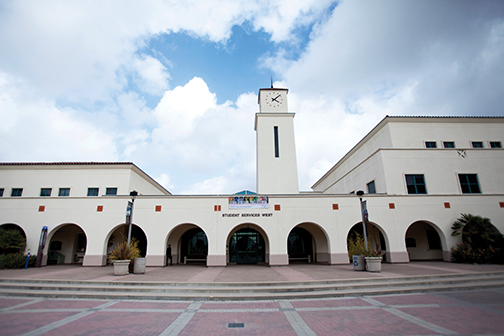
In recent years, data shows San Diego State has increased the admission rates of out-of-state and international freshmen students, a trend dating back to fall 2012.
According to an article by USA TODAY, data from the Integrated Postsecondary Education Data System revealed the enrollment of in-state freshmen students declined by 11.4% between fall 2012 to fall 2017.
The University of California system also faces this issue with a 20% increase in out-of-state students. As a result, a cap was established for the amount of non-California resident admissions at 18%, according to USA TODAY.
Senior Director of Enrollment Services Sandra Temores-Valdez said in recent years there has been an increase in the number of applications received by non-resident students for various reasons.
“Given the institution’s reputation as a national leader, there has been an increase in the number of students from (out-of-state) choosing to attend SDSU,” Temores-Valdez said. “In addition, San Diego State University has developed relationships with various targeted states to continue in enhancing the diversity of our incoming class.”
Data from SDSU’s Analytic Studies and Institutional Research webpage shows 644 out-of-state and international freshmen students were admitted in fall 2012 out of an overall total of 4,985 freshmen. In fall 2017, the amount of non-California residents admitted increased to 1,465 out of 6,209 freshmen. The data shows the amount of out-of-state and international freshmen had increased from fall 2012 to fall 2017 about 10.7%.
To accommodate the increasing number of out-of-state freshmen, the university has started to tailor some campus resources specifically to this population’s needs, Temores-Valdez added.
“(Out-of-state) students are able to connect with outstanding faculty, hands-on learning experiences, high-impact practices and many other networking and internship opportunities,” Temores-Valdez said.
Athletic training and kinesiology sophomore Alondra Magallon said she believes money is a big factor in the increase of the amount of freshman out-of-state and international students being admitted.
“I feel like the main reason they bring in more out-of-state and international students is because they bring in more money, since they have higher tuition costs,” Magallon said.
With enrollment management goals each year, a target for the amount of out-of-state students is established, Temores-Valdez said.
“This past year, the incoming (out-of-state) group will be around 900 freshman students,” Temores-Valdez said. “For international, the incoming group will be a little under 200 freshman students. Final data will not be available until after census.”
Temores-Valdez said the target for the amount of out-of-state student admissions is determined annually around September or October and that this number varies from year to year.
“As far as our non-resident target, it’s basically based on a consultation with faculty, administrators and various academic personnel,” Temores-Valdez said. “Last year, the target was about 1,000 students and for this upcoming this year, it will probably be about 1,100 students.”
California resident targets are determined differently, usually based on funding that is allocated for enrollment growth, Temores-Valdez said.
“Normally, for our California residents, it would be based on state funding,” Temores-Valdez said. “We are given an enrollment funding allocation by the chancellor’s office that we use to determine how many new students we can bring as far as residents.”
Public health sophomore Hailey Zhu said a cap should be established for the number of out-of-state and international students the UC and CSU systems accept, out of fairness for California state residents.
“I’m glad that they’re giving out-of-state and international students a chance, but I feel like they should cap it at a certain percentage such as maybe 20 to 25%, mainly because the UC and CSU systems were originally created to give opportunities to students from California,” Zhu said.











